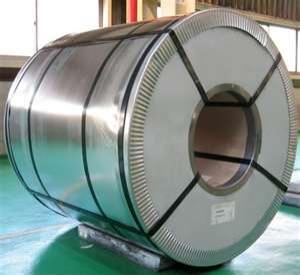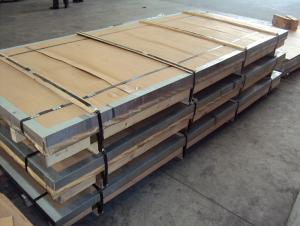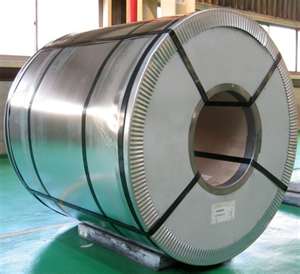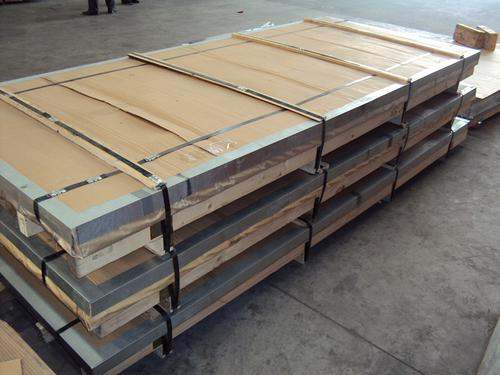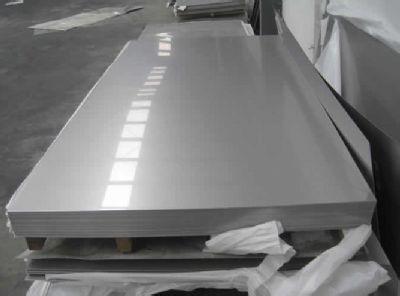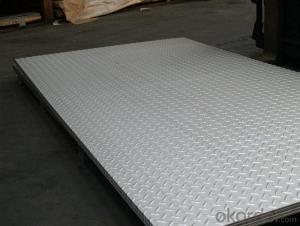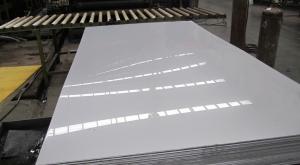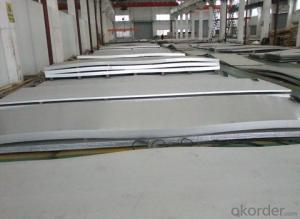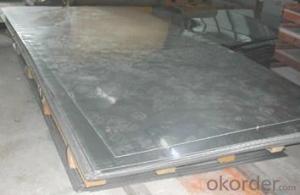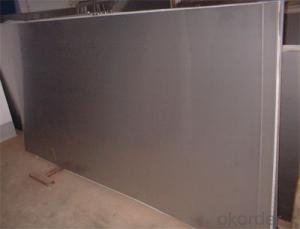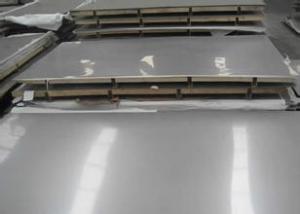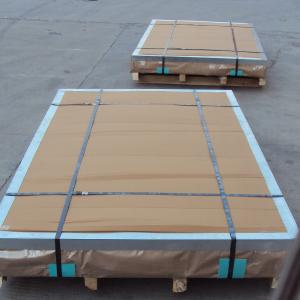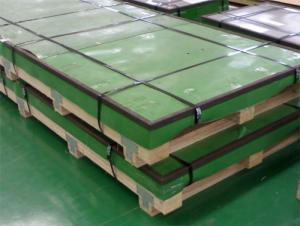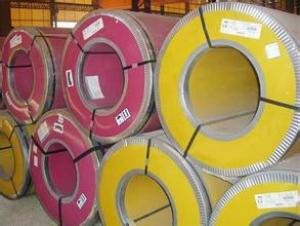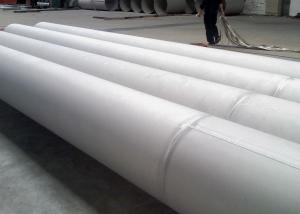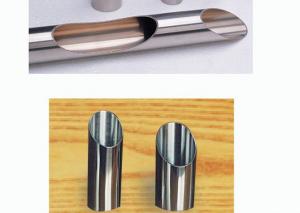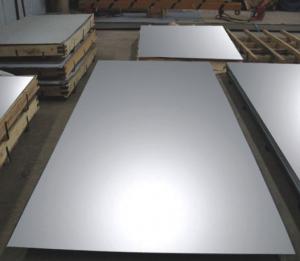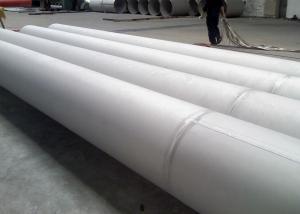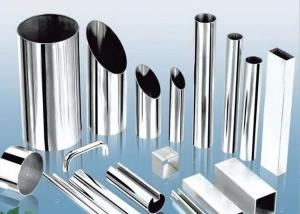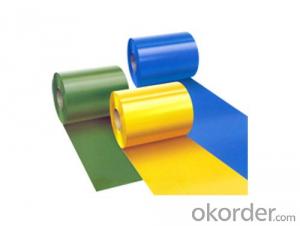Stainless Steel Sheet Hairline Surface Treatment 0.9mmx1220mmx2440mm
- Loading Port:
- Shanghai
- Payment Terms:
- TT OR LC
- Min Order Qty:
- 25 m.t.
- Supply Capability:
- 2500 m.t./month
OKorder Service Pledge
OKorder Financial Service
You Might Also Like
Product Introduction of Stainless Steel Sheet Hairline Surface Treatment 0.9mmx1220mmx2440mm:
Our Stainless Steel products including the stainless steel sheet/plate, stainless steel coil, stainless steel rod/bar, stainless steel angle, stainless steel strip, stainless steel flat, carbon steel products and alloy steel materials. It also can supply the processing of surface, like No.4, BA, HL, SB, 8K, and so on.
Loading Quantity of Stainless Steel Sheet Hairline Surface Treatment 0.9mmx1220mmx2440mm: 25 Tons/20FCL.
Grade of Stainless Steel Sheet Hairline Surface Treatment 0.9mmx1220mmx2440mm: 201, 306, 316 Etc.
Delivery Time of Stainless Steel Sheet Hairline Surface Treatment 0.9mmx1220mmx2440mm: 20 days Per Container.
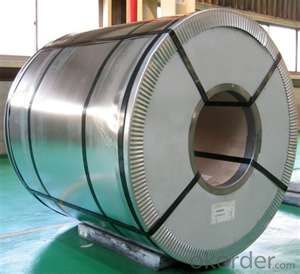
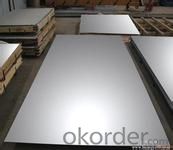
Application of Stainless Steel Sheet Hairline Surface Treatment 0.9mmx1220mmx2440mm:
| Finish | Thickness | Characteristics | Applications |
| No. 1 | 3.0mm~50.0mm | Finished by hot-rolling, annealing and pickling, characterized by white pickled surface | Chemical industry equipment, Industrial tanks |
| No. 2B | 0.3mm~6.0mm | Finished by heat treatment, pickling after cold rolling, followed by skin pass line to be more brighter and smooth surface | General Application Medical Instruments,Tableware |
| No. BA (Bright Annealed) | 0.5mm~2.0mm | Bright heat treatment after cold rolling | Kitchen utensil, kitchen ware,architectural purpose |
| No. 4 | 0.4mm~3.0mm | Polishing with No. 150 to No.180 mesh abrasivesThe most popular finishes | Milk & Food processing acilities, Hospital Equipment, Bath-tub |
| HL(Hair Line) | 0.4mm~3.0mm | Finished by continuous linear polishing | Architectural purposes, escalators, kitchen ware vehicles |
FAQ
Q: CAN YOU PROVIDE MILL TEST CERTIFICATE?
A: YES! Mill Test Certificate for Stainless Steel Sheet Hairline Surface Treatment 0.9mmx1220mmx2440mm are available.
Q: CAN YOU MAKE DDQ (DEEP DRAWING QUALITY)?
A: YES. Our material has been widely used for producing Stainless Steel Pots and Stainless Steel Sinks, which have strict request for good deep drawing quality.
Q: HOW TO GET A SAMPLE?
A: FREE Stainless Steel Sheet Hairline Surface Treatment 0.9mmx1220mmx2440mm samples are available for your checking and testing. And to get free samples, you need to send us you detailed receiving address (including post code) and your DHL/FedEx/UPS account for collecting samples, courier cost will be paid in your side.
- Q: How do you prevent fingerprints and smudges on stainless steel sheets?
- To prevent fingerprints and smudges on stainless steel sheets, you can use the following methods: 1. Clean with a microfiber cloth: Use a soft microfiber cloth to wipe down the stainless steel surface regularly. This will help remove any fingerprints or smudges quickly without leaving scratches. 2. Use a mild detergent: Mix a few drops of mild dish soap with warm water and dampen the microfiber cloth. Gently wipe the stainless steel surface in the direction of the grain, then rinse and dry with a clean cloth. 3. Apply stainless steel cleaner: There are specific stainless steel cleaners available in the market. Follow the instructions on the product and apply it to the surface using a soft cloth. This cleaner will help repel fingerprints and leave a protective coating on the stainless steel. 4. Avoid harsh cleaners and abrasive materials: Avoid using abrasive cleaning pads, steel wool, or harsh chemicals as they can scratch the stainless steel surface. Stick to gentle cleaning methods to maintain its shine. 5. Use gloves: When handling stainless steel sheets, wear gloves to prevent leaving fingerprints or smudges on the surface. By following these preventive measures, you can keep stainless steel sheets free from fingerprints and smudges, ensuring a clean and polished appearance.
- Q: Are stainless steel sheets suitable for food processing or medical applications?
- Yes, stainless steel sheets are highly suitable for food processing and medical applications. Stainless steel is a popular choice in these industries due to its numerous beneficial properties. Firstly, stainless steel is resistant to corrosion, making it ideal for environments where hygiene and cleanliness are of utmost importance, such as food processing plants and medical facilities. Secondly, stainless steel is a non-porous material, meaning it does not absorb or retain bacteria, germs, or odors. This makes it easy to clean and maintain high levels of sanitation, crucial in food processing and medical settings where contamination must be minimized. Additionally, stainless steel has excellent strength and durability, allowing it to withstand harsh conditions, heavy use, and frequent cleaning without deteriorating. This makes stainless steel sheets a reliable and long-lasting choice for these demanding applications. Furthermore, stainless steel is non-reactive with food and many medical substances, ensuring that it does not leach any harmful chemicals or contaminants into the products being processed or the patients being treated. This is crucial for maintaining the safety and integrity of both food and medical materials. In conclusion, stainless steel sheets are highly suitable for food processing and medical applications due to their corrosion resistance, non-porous nature, strength, durability, and non-reactive properties. Choosing stainless steel ensures the highest standards of hygiene, cleanliness, and safety in these industries.
- Q: Can stainless steel sheets be used for decorative panels?
- Certainly! Decorative panels can definitely utilize stainless steel sheets. Stainless steel possesses exceptional qualities like durability, strength, and corrosion resistance, rendering it a splendid option for decorative purposes. Due to its aesthetic appeal, stainless steel finds extensive use in interior design, architecture, and diverse industries. To create distinctive and visually captivating decorative panels, stainless steel sheets can be tailored with a variety of finishes such as brushed, polished, or patterned. Furthermore, stainless steel sheets can be easily fashioned, cut, and shaped into various designs, ensuring their versatility for different decorative applications. Be it for wall cladding, elevator interiors, furniture accents, or signage, stainless steel sheets lend a contemporary, refined, and sophisticated appearance that enhances the overall aesthetics of any given space.
- Q: How do you determine the thickness of a stainless steel sheet?
- To determine the thickness of a stainless steel sheet, there are several methods you can employ. The most common and accurate way is to use a digital or analog caliper. This instrument allows you to measure the thickness of the sheet with high precision. Simply place the caliper jaws on opposite sides of the sheet and close them until they are snug against the surface. The measurement displayed on the caliper will indicate the thickness of the stainless steel sheet. Another method is to use a micrometer, which is similar to a caliper but provides even more precise measurements. With a micrometer, you can measure the thickness of the sheet by placing the jaws on the edge of the sheet and gently closing them until they touch. The measurement displayed on the micrometer will show you the thickness of the stainless steel sheet. If these instruments are not available, you can also determine the thickness of a stainless steel sheet by referring to its specifications or manufacturer's information. Stainless steel sheets usually come with a label or tag indicating the thickness, which can be easily read and verified. In some cases, you may need to estimate the thickness of a stainless steel sheet without any measuring tools. In such situations, you can compare the sheet to known reference materials of different thicknesses. By visually comparing the sheet to these references, you can make an educated guess about its thickness. However, this method is less accurate and should only be used as a last resort.
- Q: Can stainless steel sheets be used for countertops or backsplashes?
- Yes, stainless steel sheets can be used for countertops and backsplashes. Stainless steel is a durable material that is resistant to stains, heat, and bacteria, making it an excellent choice for kitchen surfaces. It is easy to clean, maintains its appearance over time, and can withstand heavy use. Stainless steel countertops and backsplashes are commonly used in commercial kitchens due to their hygienic properties, but they are also becoming increasingly popular in residential settings for their sleek and modern look.
- Q: What are the different types of surface finishes available for stainless steel sheets?
- There are several types of surface finishes available for stainless steel sheets, each with its own unique characteristics and applications. 1. No. 1 Finish: This is the most common and widely used finish for stainless steel sheets. It is hot rolled and annealed, resulting in a rough, dull appearance with visible grain lines. No. 1 finish is suitable for applications where a rough surface texture is desired, such as industrial or structural uses. 2. No. 2B Finish: This finish is achieved by cold rolling the stainless steel sheet after a No. 1 finish, followed by annealing and descaling. It has a smooth, reflective surface with a slight matte appearance. No. 2B finish is commonly used for applications requiring a clean, aesthetic look, such as kitchen appliances, architectural accents, and decorative items. 3. No. 3 Finish: Also known as a brushed finish, this type of surface finish is achieved by mechanically polishing the stainless steel sheet with abrasive materials. It creates a unidirectional pattern of fine lines, giving the metal a satin-like appearance. No. 3 finish is often used for decorative purposes, such as furniture, signage, and elevator doors. 4. No. 4 Finish: Similar to No. 3 finish, No. 4 finish is achieved by mechanically polishing the stainless steel sheet, but with finer abrasives. It produces a smoother, more refined surface with a low gloss. No. 4 finish is commonly used for applications requiring good corrosion resistance and easy maintenance, such as kitchen equipment, automotive trim, and architectural components. 5. No. 8 Mirror Finish: This is the most reflective and luxurious surface finish for stainless steel sheets. It involves polishing the metal with progressively finer abrasives until a highly reflective mirror-like surface is achieved. No. 8 mirror finish is often used for decorative and high-end applications, such as architectural accents, jewelry, and luxury consumer goods. 6. Embossed Finish: This finish involves stamping or pressing a pattern onto the stainless steel sheet, creating a textured surface. Embossed finishes can vary from simple designs to intricate patterns, offering both aesthetic appeal and improved slip resistance. They are commonly used for applications requiring both functionality and visual interest, such as flooring, countertops, and wall cladding. Overall, the choice of surface finish for stainless steel sheets depends on the desired appearance, functionality, and performance requirements of the specific application.
- Q: Seeking stainless steel plate 304 material and 304j material what is the difference?
- 304 applications: petroleum, chemical, pharmaceutical, food, machinery, aerospace, construction, military, hardware, boilers, gas, plumbing and heating equipment, ships, power plants and other industries.
- Q: Can stainless steel sheets be used for swimming pool construction?
- Yes, stainless steel sheets can be used for swimming pool construction. Stainless steel is a durable and corrosion-resistant material, making it suitable for withstanding the harsh conditions of a swimming pool environment. It is commonly used for constructing pool walls, floors, and other structural components.
- Q: What about black titanium stainless steel?
- A black titanium stainless steel plate in recent years a large number of signs used in industry (the back of the board also has some kind of black ash), not the actual titanium plate, the layer of black and no titanium metal components, stainless steel should be black.
- Q: What is the process of stainless steel mirror panel? What's the difference between them and stainless steel sand blasting plates?
- The 8K board, also called mirror panel, is polished on the surface of stainless steel by grinding fluid through polishing equipment, so that the surface of the plate is as clear as the mirror. Uses: mainly used in architectural decoration, elevator decoration, industrial decoration, facilities, decoration and other stainless steel products.
Send your message to us
Stainless Steel Sheet Hairline Surface Treatment 0.9mmx1220mmx2440mm
- Loading Port:
- Shanghai
- Payment Terms:
- TT OR LC
- Min Order Qty:
- 25 m.t.
- Supply Capability:
- 2500 m.t./month
OKorder Service Pledge
OKorder Financial Service
Similar products
Hot products
Hot Searches
Related keywords
